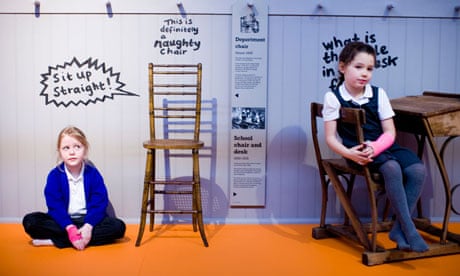Earlier this year, I was tasked by the Arts Council to review how museums and libraries could be best reflected in its strategic goals, following the government's decision to close the Museums, Libraries and Archives Council and transfer some of its functions to the Arts Council.
Having done so, I am more convinced than ever of the shared and central role that the arts and culture play in all of our lives. There is no doubt that in the current challenging climate of cuts to public spending, the arts and cultural sectors face an enormous challenge. Across the cultural spectrum, artists and organisations are having to work extremely hard to ensure that their work does more than just survive.
Amid the challenges, we have discovered real opportunities. The integration of museums and libraries functions within the Arts Council may have originally been born of financial necessity, but the unanimous response from those involved has been one of embracing the potential presented by the new partnership.
Indeed, rather than simply being content to see how it can effectively serve all three sectors, their audiences and users, the Arts Council has looked to a collective future where they can all thrive.
These changes present the cultural sector with the opportunity to think beyond the artificial barriers that have been thrown up in the past between the arts, museums and libraries, and to take a fresh look at the role these institutions play in people's lives.
Museums and libraries only make real sense when they connect with people; when they become part of the life of the nation and its citizens. The arts and cultural sectors are united by their embodiment of civil and civilised society. Culture is at the heart of enabling people to be active and dynamic citizens; of raising aspirations; of encouraging engagement and strengthening ties within and between communities.
Whatever our ambitions for ourselves, our families, our community or our country, they are better achieved if the contribution that can be made by arts and culture is recognised. I believe this is a common truth that Arts Council England must continue to embrace – to build upon and advocate ever more strongly.
The Arts Council is driven by the five goals contained in its document Achieving Great Art for Everyone, goals which were developed in consultation with the arts sector and which look to the future, aspire to excellence, and seek to build strength and resilience for the sectors. I feel strongly that museums and libraries can find a home within that strategic ambition.
However, if the arts, museums and libraries are to fully seize the opportunities created by working together as a wider cultural sector, they must also recognise and respect their differences; acknowledging commonality as strength but also accepting uniqueness as a cause for celebration rather than division.
This merging of responsibilities should not be viewed, in any sense, as a "takeover". The methods employed in bringing together museums, libraries and the arts should be bold and innovative, designed to underpin a confident sector that can actively shape its own future.
Building on that theme, my review of the Arts Council's strategic goals examines where the fit is already good, where the view needs to be broader, and where the ambition needs to be to value the central role.
In the second goal – more people experience and are inspired by the arts – we have a good match. The absolute necessity of placing people at the centre of what the sectors do is what is absolutely key. Goal three is to make the arts sustainable, resilient and innovative. The thrust of this goal is one that equally applies to museums and libraries. It is essential that we ensure this ambition is central to all cultural organisations and services.
Goal four envisages the arts leadership and workforce as diverse and highly skilled. There are practically no points of difference here, except perhaps for the additional emphasis on a professional framework and qualifications structure in museums and libraries. Yet even that is balanced by the importance and contributions of volunteers across the sectors.
However it is in goals one and five that the Arts Council has the most listening and discussing to do to make sure that museums and libraries are fully reflected.
In goal one – ensuring talent and artistic excellence are thriving and celebrated – there is no question that the theme must be broadened to reflect the different ways in which these qualities are demonstrated by the museums and libraries sectors.
The fifth and final goal is that every child and young person has the opportunity to experience the richness of the arts. This goal recognises the role of the arts in young peoples' lives and chimes perfectly with the commitment to lifelong learning that is central to the mission of libraries and museums and which the arts can learn from.
There is an overarching goal to which the arts, museums and libraries sectors should all, and in many cases, do aspire: to recognise, to create, and to build upon a sense of shared values around the unique role that arts and culture play in our daily lives.
The ambition for the whole sector now must be to refind and restate its importance to civic life.

